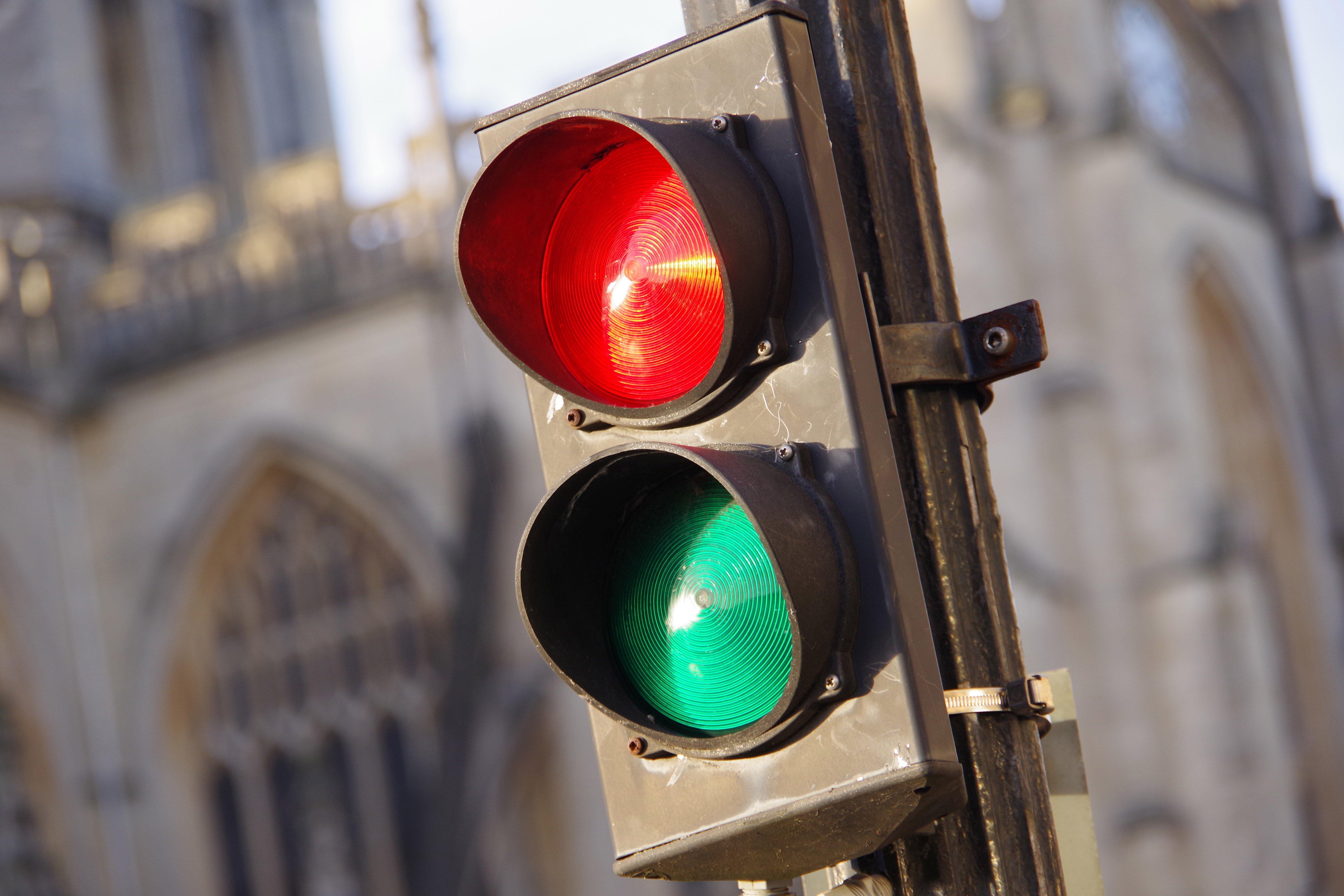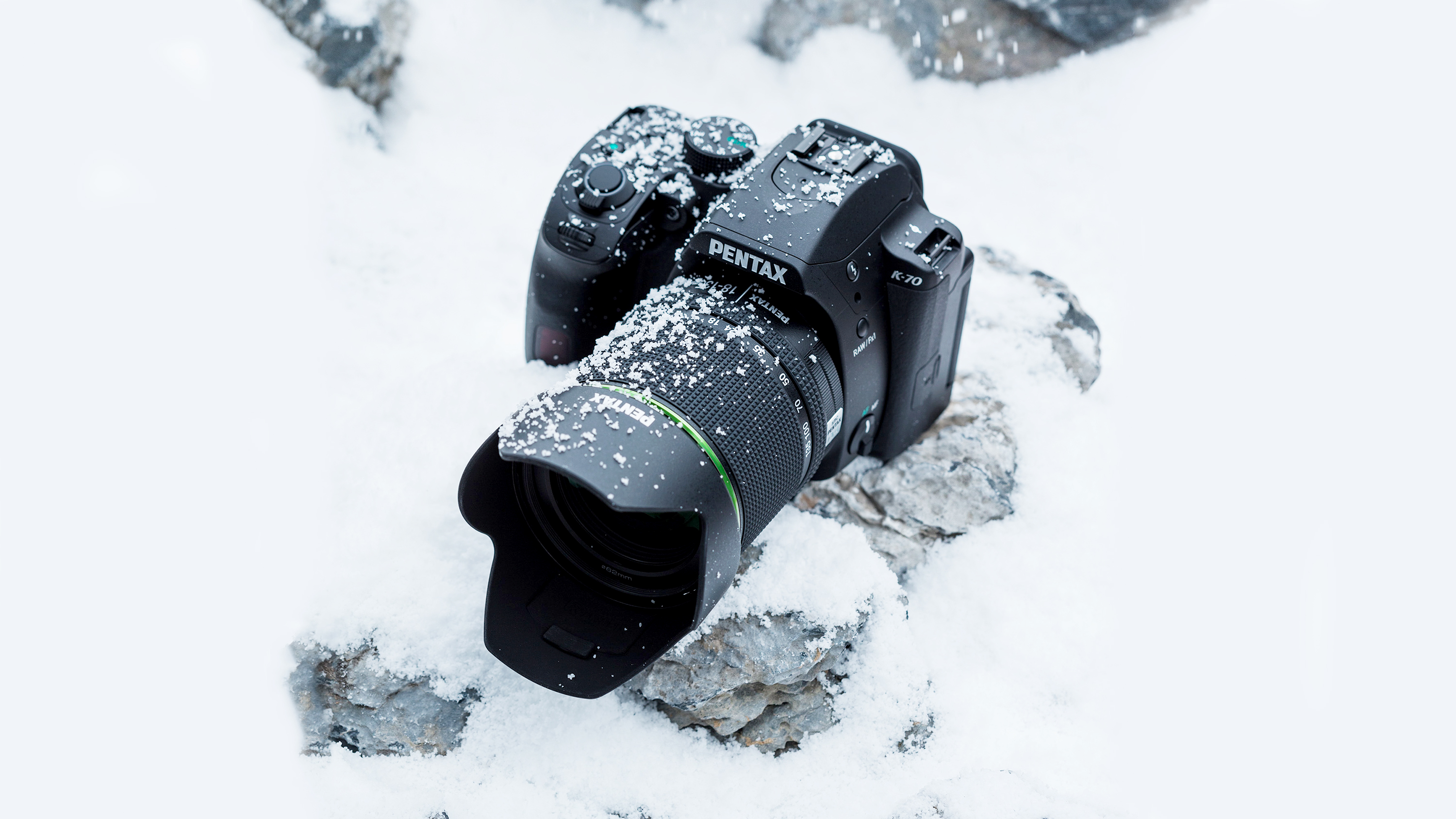Why you can trust TechRadar
Build and handling
- Dustproof, weather-resistant body
- Cold-resistant down to -10 degrees Celsius
- Weighs 688g
Pentax has built some pretty wild-looking DSLRs in the past, from its illuminated K-S1 to the multi-coloured variations on its entry-level models.
By comparison, the K-70 is a pretty sober-looking camera. In fact, if we’re being honest, the square body and square-shaped grip are just a little charmless. It’s compact, easy to grip and the controls are all in the right places, but it’s not really a thing of beauty.

The K-70 has some other interesting touches, including a mode dial with two extra settings you won’t find on any other camera brand – Sv (sensitivity priority) and TAv (shutter speed and aperture priority).
In the Sv mode, you turn the control dial to adjust the ISO setting and the camera sets the shutter speed and aperture. In TAv mode, you choose the shutter speed and aperture you want to use and the K-70 chooses the ISO setting needed for the correct exposure.
These two modes don’t do anything you can’t do with the ISO adjustments on other cameras, but they do bring the ISO setting into the ‘exposure triangle’ alongside shutter speed and aperture, so that you can consider all three in your choice of exposure mode.
The K-70 has two control dials, which is good to see and typical of enthusiast cameras – once you know your way around the camera, it makes changing the settings much quicker and simpler, especially when you’re working directly with shutter speed and aperture settings.

The rear four-way controller has buttons for setting the ISO, drive mode, white balance and flash mode. Beyond that, though, you need to switch to the K-70’s interactive display, which has icons for 20 different camera functions and settings.
While displays like these are necessary with the complex functions offered by modern cameras, it’s still a bit tiresome. Worse, until you really learn your way around the camera, you don’t really know where you need to look – some options are available via the external buttons and dials, some are on this interactive display, and others can only be found in the regular menu system.
Autofocus
- 11-point AF, nine cross-type AF points
- Sensitive down to -3EV
- New Hybrid AF system for live view
The autofocus system is only average for this class of camera too. It’s Pentax’s own SAFOX X system with a modest 11 AF points, though nine of these are of the more accurate cross-type, and Pentax does say the system is sensitive right down to -3EV, which is on a par with professional DSLR cameras.

But if the AF system is mildly disappointing in terms of the number of autofocus points, the Pentax K-70 hits back with a new hybrid AF system for its live view mode. This is a first for Pentax, mixing slow-but-accurate contrast autofocus and much faster on-sensor phase-detection AF when you’re composing shots on the rear screen.

The good news is that Pentax’s new hybrid AF system really does work. We’re used to DSLRs being painfully slow in live view mode – this is where mirrorless cameras really score highly – but the K-70 feels snappy and responsive. On most DSLRs you’d switch to live view mode only if you had to, but here it’s a perfectly usable shooting mode you might use a lot more.
Current page: Build, handling and AF
Prev Page Introduction and key features Next Page Performance and image quality
Rod is an independent photographer and photography journalist with more than 30 years' experience. He's previously worked as Head of Testing for Future’s photography magazines, including Digital Camera, N-Photo, PhotoPlus, Professional Photography, Photography Week and Practical Photoshop, and as Reviews Editor on Digital Camera World.
